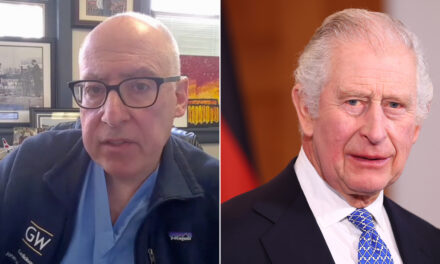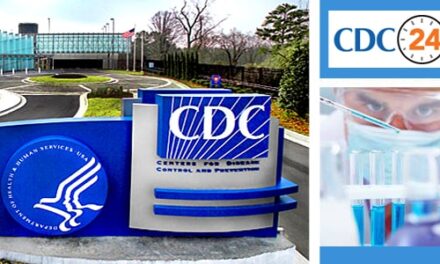

Published 6:01 AM EDT, Thu August 24, 2023

Prosthetics —
The world’s first prosthetic toe dates to an Egyptian mummy. The Romans and the Greeks wrote about prosthetic arms and legs. But artificial limbs didn’t gain a lot of movement and functionality until the 1500s, with hands that had the ability to grasp and legs that were able to kneel. While the technology continued to develop, the injuries of the Civil War would push Americans to the forefront of prosthetics. Today, technology is taking prosthetics to new levels: bionic limbs with natural feel, and built simply with 3-D printers.

Vaccines —
People tried to inoculate themselves with smallpox as far back as 1,000 A.D. in China by scratching smallpox sores onto the skin. However, it wasn’t until 1796 that English doctor Edward Jenner was able to use cowpox as a vaccine against the deadly disease. Vaccines would make another leap 50 years later, with the development of the hypodermic needle. Up until that point, a lancet had to be used. The needle was key to helping Louis Pasteur develop a successful rabies vaccine. By the 1920s, vaccines for diphtheria, tetanus, whooping cough and tuberculosis were available. By 1980, smallpox was eradicated from the world, and polio is almost eliminated from the planet.

Thermometers —
While Galileo is frequently credited as the inventor of the thermometer, it wasn’t until the mid-1800s (the era of the one pictured) that doctors were able to use thermometers to measure people’s temperatures. Before that thermometers were not only large and cumbersome, but they also were not able to diagnose actual temperature grades. In 1866, a convenient 6-inch thermometer was invented. The early varieties were made of thin tubes of glass with mercury, and were mounted to ivory or wood.

Face transplants —
Plastic surgeons date the first nose job as far back as the 1400s, but developments in this area of surgery would have to wait until the practice of the skin graft was honed in the late 1800s. Even then, it would take another two centuries before doctors were able to apply this technology to transplanting parts of the face. French doctors did a partial facial transplant in 2005, and three years later, doctors at the Cleveland Clinic performed the world’s first full facial transplant.

Anesthetics —
Herbal mixtures using opium poppy were used as early as 4,000 B.C., but it wouldn’t be administered intravenously until 1659 — first delivered to a dog’s vein using a goose quill. But in 1771, nitrous oxide was discovered, and in 1800, Humphry Davy wrote “as nitrous oxide in its extensive operation appears capable of destroying physical pain, it may probably be used with advantage during surgical operations in which no great effusion of blood takes place.” It was first used for tooth extractions. By 1847, anesthetics were used for labor and other surgeries.

Seat belts —
One of the greatest life savers of our time, the seat belt reduces the probability of driving fatalities by about 50%. In the United States alone, it prevents about 15,000 deaths annually. The three-point seat belt, patented and introduced by Volvo in 1959, was filed under an open patent, making the technology available to any company, because the developers knew the kind of safety impact it could make. By 1968 all new cars in America had modern seat belts.

Aspirin —
Aspirin is a remedy as old as time. Ancient Egyptians are known to have used willow bark to alleviate their aches and pains without knowing that it was salicylic acid, the natural version of aspirin, that reduced body temperature and inflammation. But it wasn’t until the 19th century that a synthetic version of the acid was developed into the little pills we know today. In 1899 the pharmaceutical company Bayer handed out powdered versions of the acid to doctors, and by 1915, it was sold over the counter.

The birth-control pill —
A scientific and social breakthrough, “the pill” allowed women to separate sex from procreation for the first time. It was such a controversial idea that the makers of Enovid, the first form of birth control submitted before the U.S. Food and Drug Administration, presented it as a treatment for severe menstrual disorders. Approved in summer 1957, it carried a warning: “This pill will likely prevent pregnancy.” That year, an unusually large number of women had severe menstrual disorders.

Stem cells —
The concept of stem cells, the idea of an original single cell acting as an ancestor for all organic beings, was first hypothesized in the late 19th century. But it wasn’t until the 1950s that researchers found adult stem cells in bone marrow that could develop into different types of cells. This work led to the first human bone marrow transplant. It took another 40 years before human embryonic stem cells were derived, unleashing the potential for new drugs and therapies for a range of diseases like ALS, Alzheimer’s, cancer and even blindness.

Antibiotics —
The discovery of penicillin is considered a landmark in medical history, marking the beginning of antibiotic use. In 1928, Englishman Alexander Fleming discovered a strain of mold on some contaminated petri dishes: It was penicillin. It would be another decade before scientists understood the full potential of this mold. The challenge became scaling up production. American scientists lucked out when they found a strain of penicillin on a moldy cantaloupe at a Peoria, Illinois, grocery store. It grew 200 times as much as the strain Fleming found. Thanks to penicillin, the mortality rate of bacterial pneumonia fell from 18% during WWI to less than 1% in WWII.

Psychiatric drugs —
Psychiatric drugs are a relatively new field, having just started development in the 1950s. Previously, psychiatrists stayed away from medications for treatment, using shock or psychotherapy instead. In fact, the first antipsychotic, chlorpromazine, was found by accident by surgeons trying to find a new sedative. It jump-started a new era of treating mental illness with medicine. While looking for a new therapy for schizophrenia, researchers discovered the first antidepressant.

Infant formula —
The first infant formula wasn’t created until 1867. It was a liquid mixture of cow’s milk and wheat and malt flour, cooked with potassium and called the “perfect infant food.” By the late 1800s infant formulas were marketed, and in 1951 the first nonpowder formulas were introduced, and shortly thereafter formula became more popular than breast-feeding.

In vitro fertilization —
In 1944, U.S. researchers for the first time fertilized a human egg outside the womb. But keeping the egg alive was another matter. In the United States, a political battle over the morality of in vitro fertilization ensued. It was another three decades before the world’s first “test-tube baby” was born. On July 26, 1978, Louise Joy Brown was born at a healthy 5 pounds, 12 ounces, a miracle for her parents, who suffered with years of infertility, and a miracle for science.

Genetically modified organisms (GMOs) —
Farmers have a long history of cross-breeding plants. However, once it was understood how to splice DNA and alter it in a plant, the technology was used to enhance certain traits in crops, making them more resistant to some pests and fortifying them with more nutrients. The first genetically modified food approved for human consumption by the Food and Drug Administration was the Flavr Savr tomato in 1994. It was modified to not get quickly squishy and thus survive transport with flavor and texture in tact. Soybeans are one of the most commonly modified plants. Today, the FDA is considering whether to approve genetically modified salmon, which can grow twice as fast as their nonmodified brethren.

DNA —
James Watson and Francis Crick are the people most associated with discovering the double helix design of DNA, the hereditary building blocks of life, in 1953. However, many don’t realize their discovery was built upon the work of British chemist Rosalind Franklin, who was able to use X-ray diffraction to produce photographic images of the molecule. While looking at her photographs, without her knowing, Watson and Crick made their discovery. It was another 50 years before the entire human genome was mapped.

Organ transplants —
While scientists tried organ transplants in humans and animals in the 18th century, the first successful organ transplant (skin, by the way) didn’t occur until 1869. The next successful transplant wouldn’t occur until the middle of the 20th century. The biggest boon to transplant technology was the development of the immunosuppressant drug Cyclosporine, which lessens the likeliness of rejection. The drug was approved by the U.S. Food and Drug Administration in 1983, and that same year the first lung transplant to last longer than six years took place. Today, every 10 minutes someone is added to the national transplant waiting list.

Pacemakers —
The first pacemakers were developed in the 1930s. They were large machines that were hand-cranked! Researchers worked on making smaller devices, and in 1958 the first human implanted device was created — but it only lasted three hours. The pacemaker as we know it today wasn’t achieved until the development of silicone transistors to improve the size of the machine, as well as the development of the long-life lithium battery. Today, pacemakers are about the size of a coin.

X-rays —
Discovered accidentally by German physicist Wilhelm Conrad Röntgen, X-rays allowed doctors to see inside the human body for the first time without the use of surgery. They were used during the Balkan War to locate bullets and broken bones in patients. While doctors and scientists were eager to use X-ray technology, they didn’t understand how strong the effects of radiation could be. In 1904, Thomas Edison’s assistant, who worked with X-rays daily, died of skin cancer. Today, the technology is widely used.

Cancer therapies —
Until the beginning of the 20th century the only therapy for cancer was surgery. But in the early 1900s the development of the X-ray led to a new and improved method of treatment. Not only could X-rays be used to help detect cancer, but also to get rid of it. The use of chemotherapy wasn’t developed until World War II. The U.S. military was researching a number of chemicals related to mustard gas when researchers came across the compound nitrogen mustard — which was found to work against cancer of the lymph nodes. It was used as a model for other cancer medicines, jump-starting the development of chemotherapy.
Source: https://www.cnn.com/2023/08/24/health/gallery/medical-innovations-2023/index.html


















